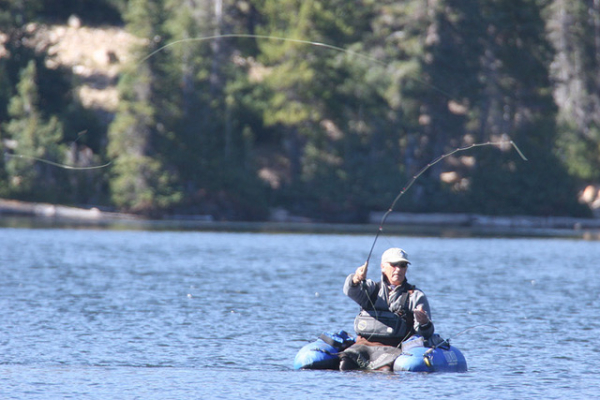Utah: Good News/Bad News on Water Levels

After a winter of record-breaking snowfall, it’s no surprise that we’re seeing higher than normal flows at waters throughout the state. After years of ongoing drought, it’s great to see water levels rising at our reservoirs and lakes.
Utahns are used to seeing our snowpack vary from year to year. These variations lead to fluctuations in water levels in our reservoirs, lakes, rivers and streams, which in turn impact the quality of fishing. Here’s a summary of how we anticipate water levels — both high and low — impact fishing in Utah in the coming months and beyond.
This year’s high water may mean slower fishing in lakes and reservoirs
Reservoir and lake water levels are higher this year than in past years, and this increased volume provides fish with more water to occupy. And, it provides more habitat for prey foods that fish rely on, like zooplankton and insects.
As a result of the current conditions, our prediction is that at some waterbodies fishing may be slower this year than in past years. That is because higher water levels allow fish to disperse more, making them more difficult for anglers to locate. Also, lots of natural prey and an abundance of other food sources may mean that fish bellies will be more full this year, making fish less inclined to take bait and lures. But high water now means great fishing in the future at our lakes and reservoirs.
There is a silver lining to this. The high water levels provide conditions that are prime for fish growth. This is because the high water levels provide more habitat for various fish prey items such as zooplankton and insects to grow. Also, the high flows bring in nutrients that help these prey items flourish.
This means that anglers should see larger fish, probably starting next year.
Also, conditions are great for high survival of fish populations. In addition to bumping up the availability of food sources, high water generally provides fish with more habitat. For example, higher water levels submerge brush that has grown along shorelines during drought years. For species like yellow perch, crappie, bluegill and bass, this submerged brush provides great spawning habitat and cover for newly hatched fish. Also, the sunken vegetation adds nutrients to the water as it decomposes, in turn increasing the production of zooplankton and invertebrates — favored food sources for many species of fish.
As a result of these conditions, we expect strong growth of many fish species in the years to come. Anglers may expect to see larger numbers of trout starting next year, and more yellow perch, crappie, bluegill and bass in two to four years. Also, the fish that anglers see should be a little larger than in recent years.
Randy Oplinger
DWR Sportfish Coordinator






